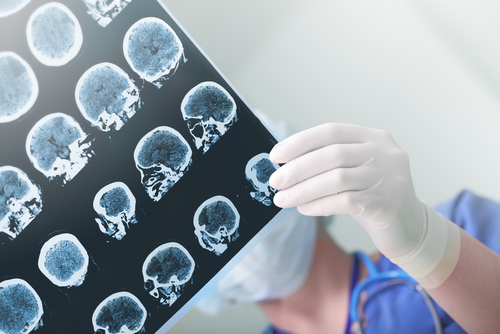Functional magnetic resonance imaging (MRI) provides valuable diagnostic presurgery information that could help identify those patients with temporal lobe epilepsy who would benefit most from surgery, according to researchers. MRI may be an independent and useful tool to provide valuable information in epilepsy evaluations.
The research paper, “Resting-state functional MRI distinguishes temporal lobe epilepsy subtypes,” was published in the journal Epilepsia.
Temporal lobe epilepsy (TLE) is the most common type of partial or localization related epilepsy, accounting for approximately 60 percent of all patients with epilepsy. Almost a third of patients with TLE may not respond to anti-epileptic drug therapy and, in those cases, surgical approaches to treatment are an option.
Patients with TLE and mesial temporal sclerosis (TLE-MTS) have a higher likelihood of achieving seizure relief than patients with TLE but no mesial temporal sclerosis (TLE-noMTS). Mesial temporal sclerosis, a condition closely related to TLE, is the loss of neurons and scarring of temporal lobe tissue. Its detection is an important goal in the presurgery evaluation of patients with TLE.
TLE-MTS is usually diagnosed by structural magnetic resonance imaging (MRI), by which hippocampal volume loss and abnormalities in mesial temporal structures are assessed. But some patients, despite hippocampal neuronal loss, do not present volume loss on MRIs. Researchers theorized that functional MRI (fMRI) might provide the complementary information needed for the correct diagnosis of MTS in patients without the structural volume loss.
In this study, researchers enrolled 34 patients with TLE and 43 matched healthy controls who agreed to research imaging protocol. The MTS presence was confirmed by histological evaluation of surgical tissue and confirmed 16 cases of TLE-MTS and 18 cases of TLE-noMTS.
The researchers investigated the structural integrity of several brain regions, primarily the hippocampus, amygdala, and neocortex. Moreover, the functional integrity of the brain regions was assessed through resting-state fMRI.
Researchers found that one measure obtained through fMRI, fractional amplitude of low frequency fluctuation (fALFF), is sensitive and specific to focal pathology in TLE. Ipsilateral hippocampal fALFF was reduced in TLE-MTS, but not in TLE-noMTS.
In this study, ipsilateral hippocampal fALFF contributed independently to the identification of MTS, suggesting that MTS patients without volume loss present abnormalities detected by this measure.
“Findings from the current study validate fALFF as a measure of regional brain integrity in TLE and highlight the value of using multimodal quantitative imaging to provide independent diagnostic information in presurgical epilepsy imaging evaluations,” the researchers wrote.


